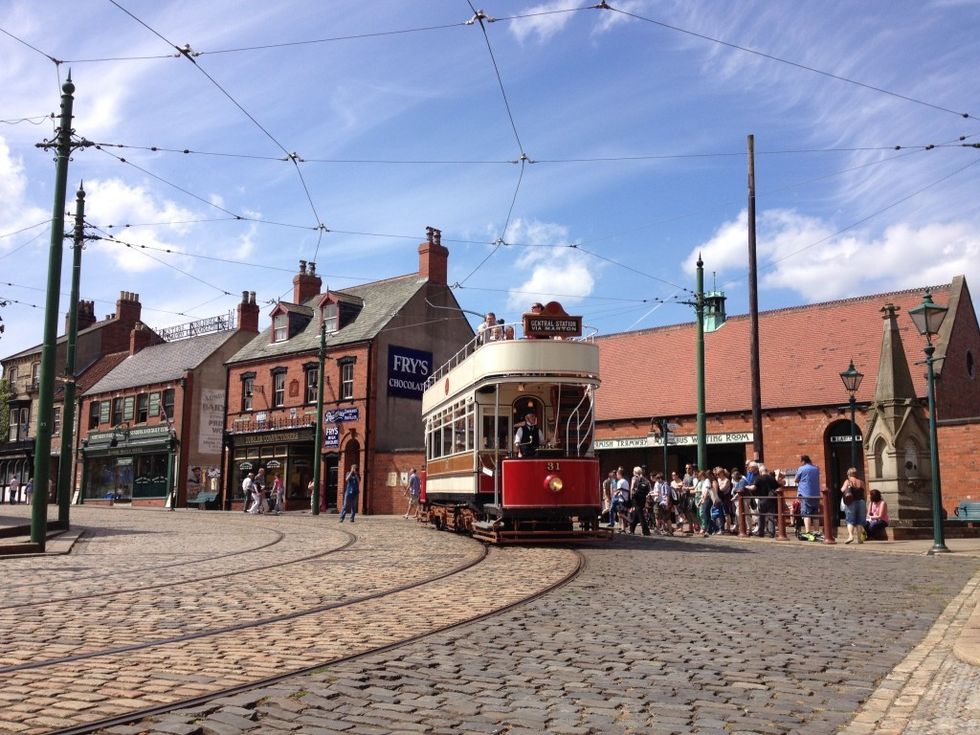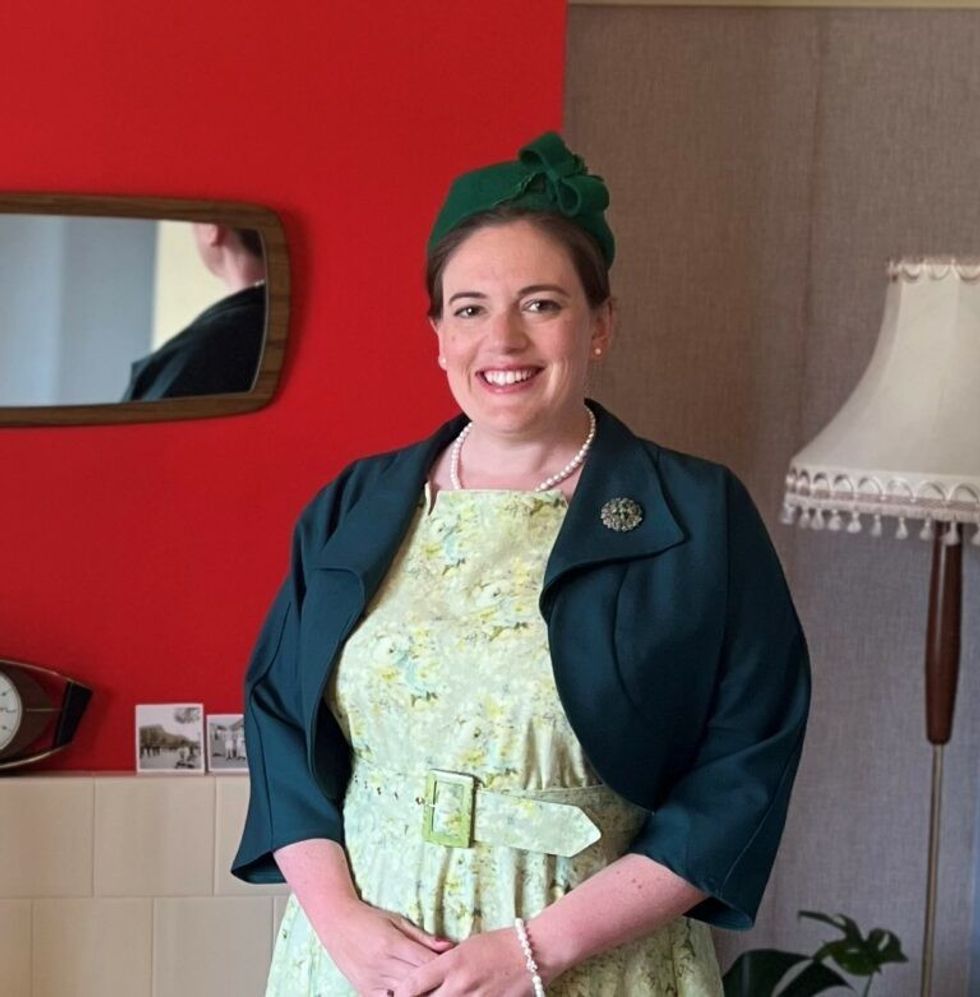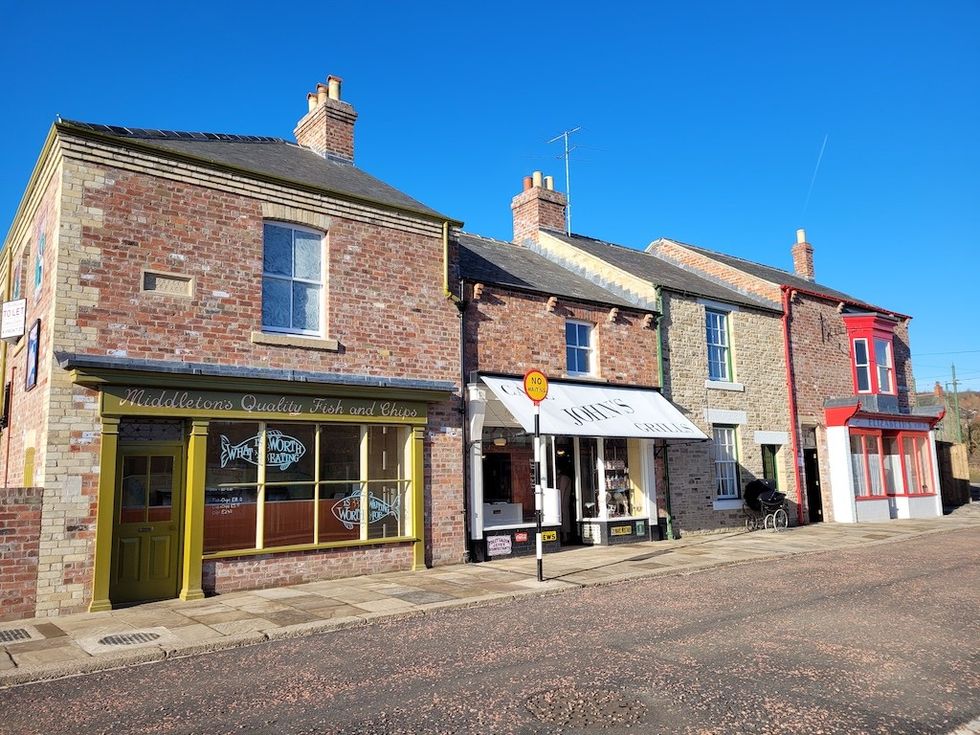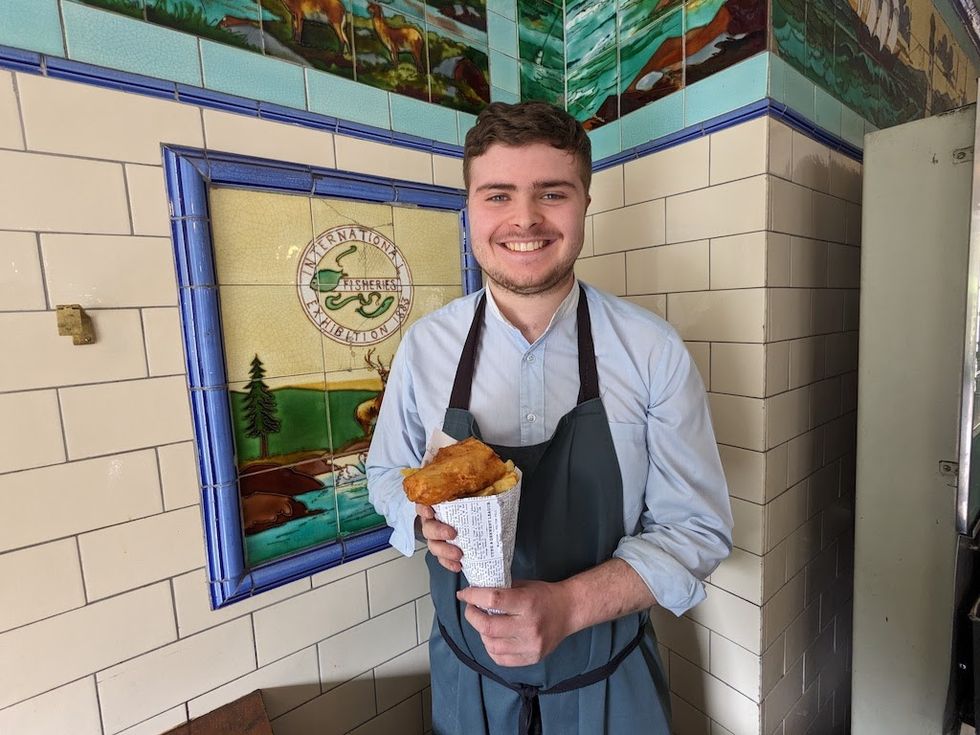Beamish is a multi-award-winning open-air museum in Durham, UK, where the history of North East England is brought to life. Earlier this year, the museum announced a series of new attractions for this year, including a recreated cinema, a toy shop, and a tavern.
New exhibits opening in 2024 include the recreation of The Grand Cinema from Ryhope in Sunderland, which will give visitors a chance to experience a trip to the pictures in the 1950s. The cinema will be recreated, incorporating as many elements and features of the original building as possible. Showings of films, period newsreels, and adverts will bring it to life.
A toy shop named after the popular Romer Parrish store in Middlesbrough and an electrical shop and repair workshop, A Reece Ltd., are also due to open on The 1950s Town’s Front Street alongside the cinema in 2024.
This year, the Drovers’ Tavern will open in the 1820s landscape. Visitors can enjoy Georgian-inspired food and drink and Georgian pottery, expanding the range of early cottage industries that visitors can experience.
In addition, visitors will be able to stay overnight at Beamish in Georgian workers' cottages, offering a unique self-catering experience in farm buildings original to the museum site. The first two of these cottages will open near 1820s Pockerley Old Hall later this year.
The museum’s new exhibits are part of the ‘ Remaking Beamish ’ project, a £20m scheme of capital works and activity programmes representing the most significant development in Beamish’s history.
Preserving the history of the Northeast at Beamish
Samantha Shotton, COO at Beamish, used to visit the attraction as a child:
“When I was young, my family would bring me,” she tells blooloop. “I’ve got such memories: Beamish has a distinctive smell because we have fires and steam engines.”
She did her work experience at Beamish, then, after reading history at university, went into the heritage sector:
“When I was at university, I returned and did a summer here at Beamish. Though I’ve worked at other places in between, I've come full circle.”
Beamish opened in the 1970s to record the region’s industrial heritage. Coal mining, shipbuilding, and iron and steel manufacturing were rapidly disappearing, along with the communities they shaped.
“A gentleman called Frank Atkinson, a curator for another museum in the area at the time, took inspiration from Scandinavian folk museums. He had the vision to recognise that the Northeastern industry's heyday wouldn't last forever. According to the story, he was on the edge of the valley looking down at the landscape and the slag heaps. He realised there was a real need—and an opportunity—to preserve the history of the Northeast.”
The result of his vision was Beamish. A strategy of ‘unselective collecting’ saw 22 huts fill swiftly with an eclectic collection, from steam engines to household items.
See also: Memory lane: what do visitors love about reconstructed streets?
A representative view
In 1970, Atkinson took up his post as director, along with the first staff, at Beamish Hall, and the museum was born. In 1971, an introductory exhibition, ‘Museum in the Making,’ opened.
Today, Beamish is a thriving open-air working museum set in 350 acres of Durham countryside. It features 1820s Pockerley Old Hall and Landscape, 1900s Town, 1900s Pit Village, 1940s Farm, 1950s Town, and 1950s Spain’s Field Farm, all brought to life by costumed role-players.
The experience immerses visitors in various periods from the past of the Northeast as they enjoy everyday life: eating fresh bread from the Edwardian Bakery, riding a tram, having their hair done in a 1950s style, and experiencing life on the Home Front during the Second World War. They can meet the pit ponies in their stables, have their portrait taken in the Edwardian photographers' studio, marvel at the unbroken Georgian view, or participate in the museum's year-long events programme.
“Some of our buildings have been translocated,” Shotton remarks. "They have been taken down brick by brick and rebuilt. Some were already on the site, and others have been copied to ensure we've got as representative a view of the Northeast as possible. Frank Atkinson would have been over the moon to have attracted 250,000 visitors a year back then. Now, we get over 800,000.”
Social history at Beamish
The most recent addition to Beamish is the 1950s town. As part of the Remaking Beamish project, a replica of Leasingthorne Colliery Welfare Hall and Community Centre (now known as Coundon and Leeholme Community Centre) opened at the museum in 2019, the first building in the 1950s Town. The Northern General Transport Bus Depot also opened its doors, preserving transport heritage.
In 2022, the 1950s Front Street terrace, Spain’s Field Farm, and Coronation Park and Recreation Ground all opened their doors. 2023 saw the town growing as replicas of semi-detached council houses from Red House in Sunderland, police houses and offices from Leam Lane in Gateshead were added, along with a bowling green and pavilion from Billingham and replicas of Marsden Road Aged Mineworkers’ Homes.
In addition to showcasing what life was like for retired miners in the 1950s, two of the cottages provide a dedicated space for the inspirational work of the museum’s health and wellbeing team.
One focus of the museum is on social history. Shotton adds:
“We also do quite a lot of health and wellbeing work. We work with several community groups - dementia care and men's health groups, for example. Our range is wide, and we have a very broad demographic range.”
Over 40,000 schoolchildren visit each year:
“It’s our ambition to eventually welcome as many schoolchildren from the Northeast through our doors as possible.”
The Remaking Beamish capital project
Turning to the Remaking Beamish capital project, she says:
“It's very exciting. It’s been a decade-long project. With help from everybody who buys a National Lottery ticket, the National Heritage Lottery fund contributed over £10 million. So, it became a £20 million project. We have delivered around 21 different exhibits through that, which is fantastic. We’ve done a little bit of everything.”
The project’s first exhibit, Joe the Quilter’s Georgian cottage in the 1820s Landscape opened in 2018. This is a loving and meticulous recreation based on an archaeological dig and historical records. Joe Hedley was a quilter who would, like most ordinary people of the time, have vanished into obscurity if he had not been brutally murdered on a snowy evening in 1826, a crime that remains unsolved. Following his death, his furniture was auctioned. Records of the bills of sale have enabled the cottage’s re-creation.
Concerning the 1950s town, still in living memory for some visitors, she says:
“Our 1950s Front Street terrace includes Middleton’s Quality Fish and Chips, John’s Café, a recreation of artist Norman Cornish’s home, and Elizabeth’s Hairdresser’s.”
All are transplanted working replicas of existing historic businesses.
“It’s great for families. There’s a lot of nostalgia because we see multiple generations coming together, with grandparents saying, ‘I had one of those,’ or, ‘I remember my family had one of those.’ You can see the development through time, too. The social housing, for example, is very well laid out and reasonably sized. You can see that change in social mindset.”
Health & wellbeing
The Beamish Health and Wellbeing Team leverage the 1950s town’s potential as a therapeutic resource for dementia patients; Shotton explains:
“Clover Cottage, newly developed in our 1950s Town, has been designed with plenty of space and in a dementia-friendly, comfortable, and useable way that still fits with the 50s.”
Full of evocative 1950s objects, sounds, smells and even tastes, Clover Cottage, located next to the 1950s bowling pavilion, is an ideal space for groups of older people, people living with dementia or those with learning disabilities, and their families and carers, to enjoy together. Featuring a spacious dining/living area, working kitchen, conservatory and accessible garden, Clover Cottage is fully wheelchair accessible, with an accessible toilet and changing places.
The design of the space allows everyone to try a whole host of activities. These include making toast on the real coal fire, pottering in the garden, exploring traditional heritage crafts, or joining a sing-along around the piano.
To combat social isolation, depression and anxiety, men’s groups also meet weekly at the museum. Here, they take part in a variety of activities, including traditional heritage crafts, using the museum and its collections as inspiration.
"We have Beamish-themed printed bags available for a donation, created by people living with dementia or other long-term health conditions,” Shotton explains. “It’s a really nice element of our work, and it shows the social impact we can have as a museum.”
Guests are immersed in the period
Beamish also has self-catering holiday cottages. These allow tourists to immerse themselves in the landscape and period while enjoying modern conveniences—such as bathrooms and electricity—that would not have been available to genuine Georgians.
“It’s a chance to experience the serenity of the landscape. We even have the type of livestock Georgians would have been familiar with.”
Museum staff are in costume; interpretation is through engagement and immersion rather than text on boards.
“Visitors get a chance to engage in a way that works for them,” she comments. “It's a conversation. They go into the exhibits, come out, and then talk to somebody in costume. People who wouldn't usually engage with museums take a lot away from the experience here because they get a lot out of that conversation. It also allows us to tell more diverse stories and have conversations about different elements.
"The accommodation feels like another step in that immersive story.”
What is next for Beamish?
In terms of communication, she adds:
“We are working on a new media strategy. We have coal-burning fires – there is a conversation there about sustainability. And we are opening a 1950s toyshop. That’s interesting because it was a time when plastics in toys were becoming a bigger thing.”
The shop, packed with colourful toys that visitors can buy, will also feature toys from the museum’s collections and a dolls’ hospital.
“The dolls’ hospital, where toys will be repaired using a range of materials, will allow us to have wider conversations about not only plastic but mending and re-using.”
Another addition will be the cinema, opening in early summer:
“The programme still hasn’t been settled. There are some really key 1950s films. We're interested to hear what people think we should be showing—and we’re definitely going to show some newsreels to animate the space. We've done an exciting project with young team members with film skills. They have filmed some of the adverts that will go in the 1950 Cinema.”
Additionally:
“We're hoping to develop an events programme. As part of our fundraising, we are doing a nice sponsor-of-seat campaign. It’s a different way to support us—people can get their name plaqued on the seats.”
In terms of the next phase of development, she adds:
“The Drovers Tavern comes next so visitors can drop in for a drink and lovely food. Then we have our toy shop, electrical shop and STEM learning space that will open at the end of May. The piece de resistance will be the cinema and our accommodation, which will be open from the summer.”
A living museum
As a living museum, Shotton feels Beamish affords different opportunities to engage with the past from more conventional institutions.
“Firstly, we represent the heritage of the people from the Northeast. So, it’s likely there will be something here that sparks conversation within your own family. And because we cover lots of different areas, we're able to appeal to a wide range of interests.
"If you're interested in steam engines, we have steam engines; if you're interested in buses and trams, we have those. If you just want a space where you can go and be safe outdoors, or if you want to experience the past or try heritage crafts, you can do that, too. It allows us to be a lot of things for a lot of people. We tell stories in different ways to involve people in different ways.
"Then we've got our school and big events programmes.”
Then there is community engagement:
“In everything we've built, we've tried to include the community in that and to reflect the location’s heritage. For example, we have a pair of semi-detached council houses from Red House in Sunderland. One tells a story of Polish migration. For the other, we had an extensive campaign to decide what to reflect. In the end, we chose that of two sisters. It was their Mam’s house. She died before we opened it. But the sisters come in and volunteer at weekends, so visitors might find themselves talking to the two ladies who lived in that house as children in the 50s.
"It’s a lovely link to the community they're from.”
Learning at Beamish
Beamish has a range of different learning programmes:
“We do a variety of STEM subjects as well as history – there are so many elements we can tie in.”
An example is Beamish’s Just One Spark activity, which takes the 1812 Felling Mine Disaster as its starting point. Ninety-two people died in the incident when two explosions, caused by a naked candle flame igniting methane gas and coal dust, tore through the mine. As a result, a local Reverend launched a campaign to find the design for a mining safety lamp. In January 1816, Hebburn Mine successfully tested the Davy safety lamp. Just One Spark explores the investigation into the explosions and the race to find a solution to ensure the safety of miners.
Another initiative, The Inside Scoop, delves into the evolution of ice cream and the impact of Italian immigration to the North East from the 1870s to the 1950s. Meanwhile, Call to War encourages pupils to discover different attitudes towards the First World War. They can consider what may have driven a 15-year-old underage soldier to enlist in 1914.
Further activities, rooted in STEM and social and industrial history, offer learning activities for Key Stages 1-3.
“We also offer an overnight camping experience on-site,” Shotton says. "Schools can come to us in the evening, do an overnight camp, which is essentially another way for children to engage, and then spend the next day exploring Beamish. We’ve got huge ambitions: we'd love to make sure that every schoolchild gets a chance to come here.”
Events celebrate the site
Events at Beamish are, Shotton explains, an opportunity to celebrate different aspects of the site.
The Beamish Steam Gala on 6 & 7 April showcased a wide array of road steam, locomotives, and internal combustion engines. Traditional May Day celebrations will be held on the 5 & 6 May, and the focus will be on all things equine during the Horses in Harness event on the 8 & 9 June. Later in June, the Fares Please! event is a festival of public transport.
From July to the start of September, visitors can step back in time to participate in various summer activities across the museum. On the 7 & 8 of September, Beamish will welcome the North East Horticultural Society for their annual show:
“We have exciting Halloween and Christmas programmes, too,” she adds. “They are really popular. We're all about building memories and traditions. Then we have a Home Farm event and lots of live music.”
Beamish looks to a bright future
Despite a climate that can make running an open-air museum challenging, Beamish is thriving:
“We are reliant on people choosing to come and spend their hard-earned cash with us. So, we mitigate that by being excellent value,” Shotton comments. “We have a ‘pay for a day, come for a year’ model. Our membership, the Beamish Unlimited Pass, allows visitors to return as many times as they like for a year.
"We do have to have some commercial elements. But we're really grateful to our staff, volunteers, communities, supporters, and visitors for keeping us going. We want to make sure that they have a great experience when they get here.”
For the future, she adds:
“We are thinking a lot about sustainability and how to leverage philanthropy most effectively. We have some exciting developments coming in that space shortly.
"As we reach the end of our big capital project, we are preparing to consider Beamish's future: Do our purpose and values still reflect what we want them to be? We hope to include everybody in that conversation—our communities and visitors. That will inform our strategy for the future.
"We will be looking at a new master plan, so we want to make sure we do the right groundwork to make sure that we are going to be who we need to be.”















 TM Lim and Adam Wales
TM Lim and Adam Wales









 Toby Harris
Toby Harris Hijingo
Hijingo Flight Club, Washington D.C.
Flight Club, Washington D.C.
 Flight Club Philadelphia
Flight Club Philadelphia Flight Club Philadelphia
Flight Club Philadelphia Bounce
Bounce Hijingo
Hijingo Bounce
Bounce
 Fernando Eiroa
Fernando Eiroa











 Nickelodeon Land at Parque de Atracciones de Madrid
Nickelodeon Land at Parque de Atracciones de Madrid Raging Waters
Raging Waters  Mirabilandia's iSpeed coaster
Mirabilandia's iSpeed coaster Parque de Atracciones de Madrid
Parque de Atracciones de Madrid Ferracci at the ribbon-cutting ceremony for Nickelodeon Land at Mirabilandia, with (left) Marie Marks, senior VP of global experiences for Paramount and (cutting the ribbon) Sabrina Mangina, GM at Mirabilandia
Ferracci at the ribbon-cutting ceremony for Nickelodeon Land at Mirabilandia, with (left) Marie Marks, senior VP of global experiences for Paramount and (cutting the ribbon) Sabrina Mangina, GM at Mirabilandia Tropical Islands OHANA hotel
Tropical Islands OHANA hotel Elephants at Blackpool Zoo
Elephants at Blackpool Zoo  Tusenfryd
Tusenfryd
 Andrew Thomas, Jason Aldous and Rik Athorne
Andrew Thomas, Jason Aldous and Rik Athorne







